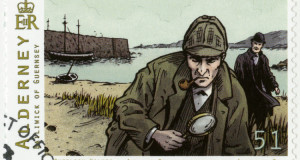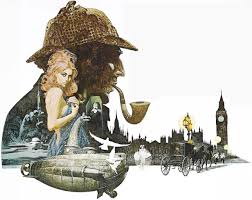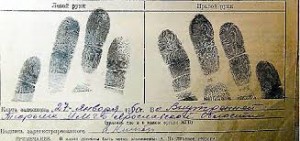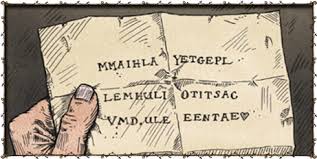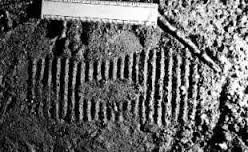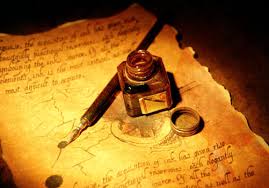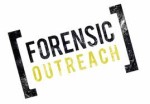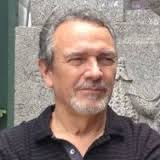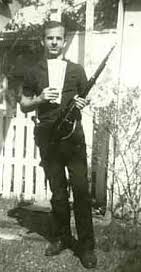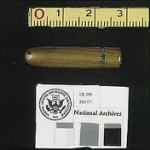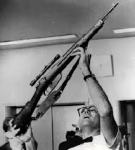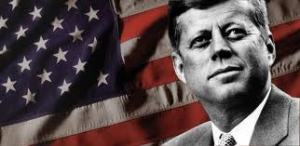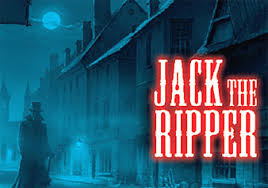 Who was the real Jack The Ripper? The man who terrorized London in the fall of 1888 by butchering at least five prostitutes is the world’s most famous serial killer who’s never been caught. What did the original investigation tell us about him and what has modern forensics learned about his true identity?
Who was the real Jack The Ripper? The man who terrorized London in the fall of 1888 by butchering at least five prostitutes is the world’s most famous serial killer who’s never been caught. What did the original investigation tell us about him and what has modern forensics learned about his true identity?
The name originates from a letter sent to police by someone claiming to be the murderer and it was signed ‘Jack The Ripper’. Like so much in the Ripper case, it’s difficult to sort fact from fiction as evidence has been lost over time and many ‘facts’ are actually opinions by writers from the past century.
 Jack The Ripper has remained in the public’s fascination thanks to the mass of publicity that the murders originally received in the press. It was at a time of immense social change and the public were becoming more literate. As well, technology had advanced and allowed the immediate flow of information to the world. Readers followed the case daily as the cat and mouse game between the police and the Ripper appeared to play out in the newspapers. The mysteries surrounding this killer add to the romance of the story and create an intellectual puzzle that people still want to solve.
Jack The Ripper has remained in the public’s fascination thanks to the mass of publicity that the murders originally received in the press. It was at a time of immense social change and the public were becoming more literate. As well, technology had advanced and allowed the immediate flow of information to the world. Readers followed the case daily as the cat and mouse game between the police and the Ripper appeared to play out in the newspapers. The mysteries surrounding this killer add to the romance of the story and create an intellectual puzzle that people still want to solve.
Interestingly, the series of murders stopped as abruptly as they started. Over the years, hundreds of books have been written about the Ripper and dozens of suspects have been named. No one was ever charged, however strong accusations are now made as the result of applying modern forensic techniques to hundred year old evidence.
First let’s look at the crimes.
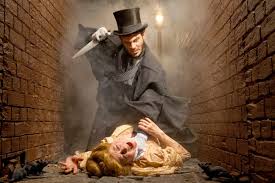 It’s not clear how many women Jack The Ripper killed. Five for sure. Probably six. And possibly up to eleven murders that occurred in the Whitechapel area of London over a several year period. The nexus (connection) to the core group, known as the Canonical Five, comes from the killer’s unique MO (modus operandi) and the proximity in area and time in which the bodies were found. The victims were:
It’s not clear how many women Jack The Ripper killed. Five for sure. Probably six. And possibly up to eleven murders that occurred in the Whitechapel area of London over a several year period. The nexus (connection) to the core group, known as the Canonical Five, comes from the killer’s unique MO (modus operandi) and the proximity in area and time in which the bodies were found. The victims were:
-
Mary Ann (Polly) Nichols – murdered 31 August 1888.
-
Annie Chapman – murdered 08 September 1888.
-
Elizabeth Stride – murdered 30 September 1888.
-
Catherine Eddowes – murdered 30 September 1888.
-
Mary Jane Kelly – murdered 09 November 1888.
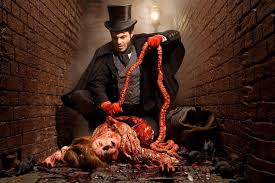 All of the victims were killed in the dark and in isolated locations. Pathology confirmed they were first strangled to unconsciousness, then finished off with lacerated throats. The degree of mutilation varied. One only had her throat slit (it may be that the killer was interrupted and scared off) while the others were extremely mutilated with organs removed. There was no evidence of recent sexual activity indicating, as with most serial killings, violence was the key element.
All of the victims were killed in the dark and in isolated locations. Pathology confirmed they were first strangled to unconsciousness, then finished off with lacerated throats. The degree of mutilation varied. One only had her throat slit (it may be that the killer was interrupted and scared off) while the others were extremely mutilated with organs removed. There was no evidence of recent sexual activity indicating, as with most serial killings, violence was the key element.
There’s been much speculation that the killer had advanced medical knowledge and used precision instruments in his work. This is not the case when analyzed objectively. The original autopsy reports are publically available, all confirming that the incisions and organ extractions could be done by anyone with reasonable strength using a large butcher knife in a rage.
There were an unconfirmed number of taunting letters received by the police and the press from different people, with different handwriting, claiming to be the killer.
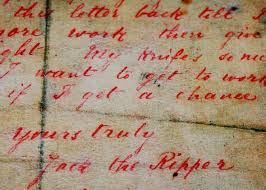 The first was on September 25th and was signed ‘Jack The Ripper’. None of the letters are believed to be from the killer and none contained what would be ‘hold-back’ information, known only to the police and the actual killer. It’s certain that most were from media people fueling newspaper sales and some came from quacks.
The first was on September 25th and was signed ‘Jack The Ripper’. None of the letters are believed to be from the killer and none contained what would be ‘hold-back’ information, known only to the police and the actual killer. It’s certain that most were from media people fueling newspaper sales and some came from quacks.
The investigation was principly handled by the City of London police with Scotland Yard assisting. Hundreds of leads were followed and forensic techniques of the day were applied, mostly sketches and photographs. This was long before DNA science and even proper fingerprinting, so there’s no actual evidence or signature available to identify the perpetrator. Unfortunately, most of the investigation files and physical exhibits were destroyed during the Blitz in World War Two.
Three men were primarily identified as suspects.
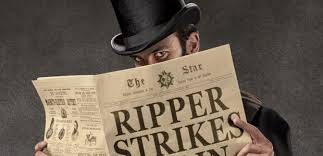 M.J. Druitt was a troubled barrister turned teacher who committed suicide a month after the last murder. Aaron Kosminiski was a Polish Jew who was locked in an asylum shortly after the murders and died in 1919. Michael Ostrog was the third police suspect, but the evidence against him was non-existent except that he was a demented con-man.
M.J. Druitt was a troubled barrister turned teacher who committed suicide a month after the last murder. Aaron Kosminiski was a Polish Jew who was locked in an asylum shortly after the murders and died in 1919. Michael Ostrog was the third police suspect, but the evidence against him was non-existent except that he was a demented con-man.
Many conspiracy theories popped up over the decades blaming the Freemasons, Irish extremists trying to terrorize the British, occultists, and even the grandson of Queen Victoria, Prince Albert Victor. A visit to Wikipedia finds a list of twenty-eight documented suspects – some quite a stretch. https://en.wikipedia.org/wiki/Jack_the_Ripper_suspects
In 1988 the FBI did a psychological profile on Jack The Ripper, describing him pretty much as a white male with mommy issues. It’s an interesting read and can be downloaded here: https://vault.fbi.gov/Jack%20the%20Ripper/Jack%20the%20Ripper%20Part%201%20of%201/view
 Recently, two books were published that profess to conclusively solve the Ripper mystery. One was by famed crime novelist Patricia Cornwell titled Portrait of a Killer – Jack The Ripper – Cased Closed. She identifies a tormented artist named Walter Sickert who undoubtedly penned a few of the Ripper letters and she makes a case at forensically proving his authorship. But she comes a long way from providing any link to his hands-on being the Killer and I’m surprised she stuck her neck out, given her prominence as a crime writer.
Recently, two books were published that profess to conclusively solve the Ripper mystery. One was by famed crime novelist Patricia Cornwell titled Portrait of a Killer – Jack The Ripper – Cased Closed. She identifies a tormented artist named Walter Sickert who undoubtedly penned a few of the Ripper letters and she makes a case at forensically proving his authorship. But she comes a long way from providing any link to his hands-on being the Killer and I’m surprised she stuck her neck out, given her prominence as a crime writer.
The second book is titled Naming Jack The Ripper. It’s by Russell Edwards who claims that he privately funded a research project which identified DNA linked to Aaron Kosiminski on a shawl associated to victim Catherine Eddowes. This molecular identification is seriously questioned by DNA experts, including the discoverer of the technique, Sir Francis Crick.
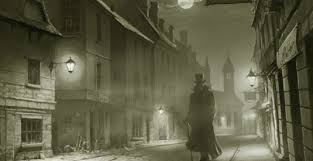 And at this writing, August 2015, another forensic venture is underway in an attempt to solve the Ripper mystery. Dr. Wynne Weston-Davies claims in his new book The Real Mary Kelly that Jack The Ripper was actually Kelly’s husband who staged the first four murders in a set-up to hide his fiendish plan to kill his prostitute wife, making it look like a serial killer was at work. Weston-Davies has applied to the British Ministry of Justice for an exhumation order to dig up Mary Kelly for a DNA sample to support his belief that he’s Mary Kelly’s great, great nephew. How all that ties together, I’m not sure.
And at this writing, August 2015, another forensic venture is underway in an attempt to solve the Ripper mystery. Dr. Wynne Weston-Davies claims in his new book The Real Mary Kelly that Jack The Ripper was actually Kelly’s husband who staged the first four murders in a set-up to hide his fiendish plan to kill his prostitute wife, making it look like a serial killer was at work. Weston-Davies has applied to the British Ministry of Justice for an exhumation order to dig up Mary Kelly for a DNA sample to support his belief that he’s Mary Kelly’s great, great nephew. How all that ties together, I’m not sure.

